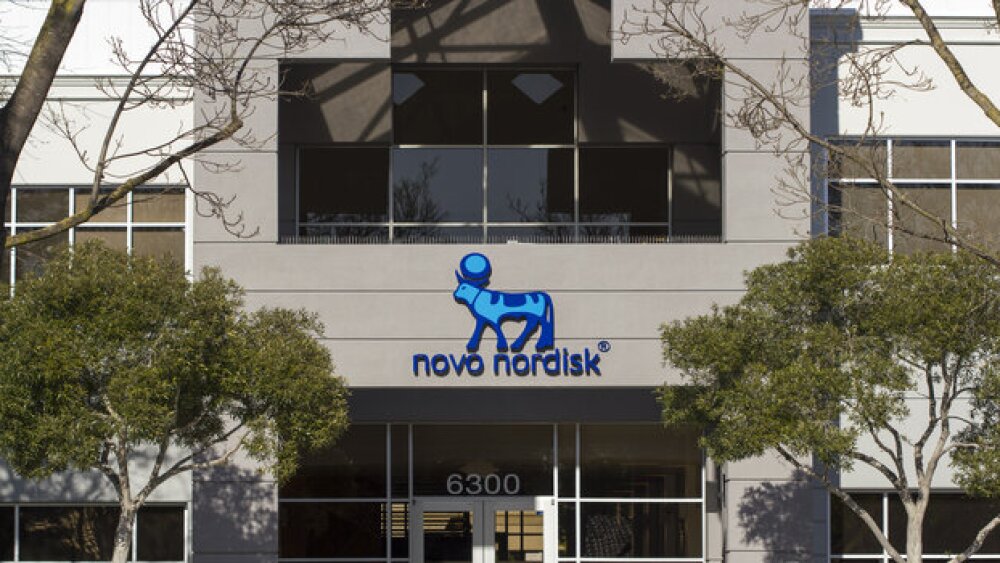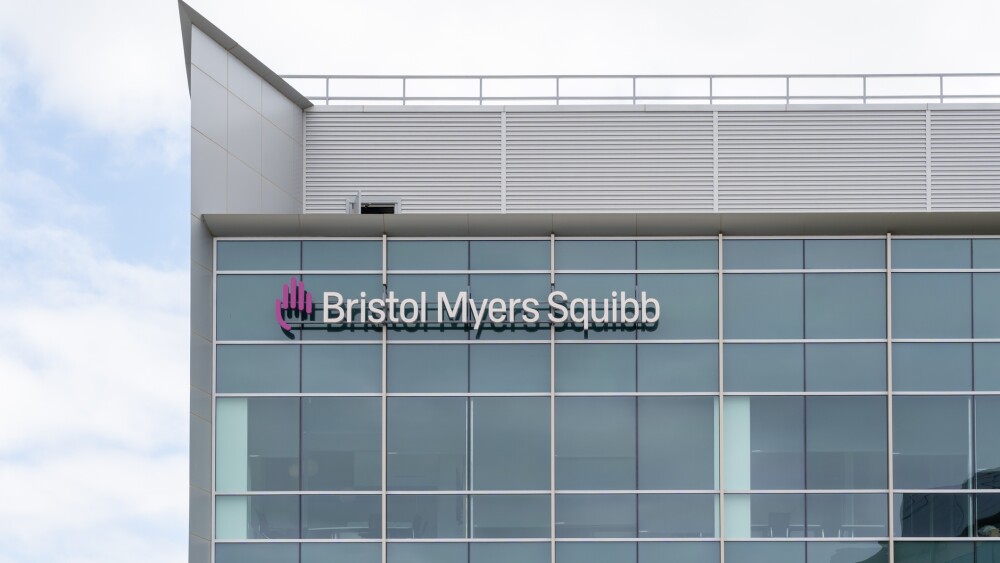Italfarmaco Group announced topline data from its proof-of-concept Phase 2 trial with Givinostat, the company’s proprietary histone deacetylase inhibitor, in 51 adult males with Becker Muscular Dystrophy.
- MRI data showed that Givinostat counteracted muscle deterioration supporting its continued development as a treatment for Becker Muscular Dystrophy (BMD) despite miss of primary endpoint
- The company will meet with regulatory authorities to discuss future development plans for Givinostat in BMD
- Safety profile for Givinostat in line with previous observations
MILAN--(BUSINESS WIRE)-- Italfarmaco Group announced today topline data from its proof-of-concept Phase 2 trial with Givinostat, the company’s proprietary histone deacetylase (HDAC) inhibitor, in 51 adult males with Becker Muscular Dystrophy (BMD). The study was designed to evaluate the effect of Givinostat in BMD, building on the experience developed in Duchenne Muscular Dystrophy. Based on this experience, change in total fibrosis in the muscle biopsy was selected as the primary endpoint of the study and change in fat fraction and contractile CSA using quantitative Magnetic Resonance Imaging (MRI) as key secondary endpoints. Givinostat did not show significant difference in the primary endpoint compared to placebo. However, significant difference from placebo in MRI of muscles in the whole thigh as well as quadriceps confirmed the ability of Givinostat to counteract muscle deterioration in the treated BMD patients. The safety profile of Givinostat in BMD was in line with previous studies and no serious safety concerns were observed. Based on the overall results, the Company plans to meet with US and EU regulators to discuss the next development steps for Givinostat in adults with BMD. The topline data was presented by Paolo Bettica on June 26, 2021, at the virtual Parent Project Muscular Dystrophy (PPMD) Annual Conference.
“Becker Muscular Dystrophy is a debilitating rare disease with no treatment currently available. We are very encouraged by the significant difference in muscle fat infiltration between the two groups after 12 months, indicating a beneficial effect of Givinostat in delaying muscle deterioration. These, as well as other measures, support the further development of Givinostat in BMD and we will evaluate the best path forward in discussion with the regulatory bodies,” said Paolo Bettica, MD, PhD, Chief Medical Officer at the Italfarmaco Group. “We will continue to analyze the data to understand better the lack of meeting the primary endpoint, which could be attributed to high variability and imbalances of baseline histology parameters between cohorts, and lack of progression within the 12 months of study duration.”
Dr. Bettica added: “Although this clinical trial in BMD was a stand-alone study, the study further confirms the ability of Givinostat to prevent downstream pathogenic effects due to dystrophin genetic defects, which was already seen in young boys with Duchenne Muscular Dystrophy.”
The Phase 2 trial investigating Givinostat in BMD patients was a randomized, double-blind, placebo-controlled study (ClinicalTrials.gov: NCT03238235). In total, 51 patients between the ages of 19 and 61 years were randomized in a 2:1 ratio and treated with an oral suspension of Givinostat or placebo twice per day for a period of 12 months. Of the patients enrolled in the study, 30 out of 34 in the Givinostat group and 17 out of 17 in the placebo group completed the trial and were included in the analysis. Two patients had to withdraw from the trial due to the occurrence of an adverse event, which was resolved, and two patients were not able to travel back to the trial site due to the Covid-19 pandemic and had to be withdrawn.
Overview of Clinical Results
Primary Endpoint: Muscle tissue fibrosis was selected as the primary endpoint to assess the efficacy of Givinostat based on the previous experience in Duchenne Muscular Dystrophy. Tissue biopsies taken at the end of 12 months from the biceps muscle in the upper arm to determine the change from baseline in total muscle tissue fibrosis (%), did not show a change over the 12 months of treatment in both groups with no difference between the Givinostat-treated group and the placebo group.
Secondary Endpoints:
Fat infiltration: A key secondary endpoint was the change from baseline of fat infiltration of muscles in the whole thigh and the quadriceps using MRI. The imaging results revealed no change of fat infiltration in the Givinostat-treated population while an increase in fat infiltration was observed in the placebo group over the study timeframe of 12 months with a significant difference between the groups. Fat infiltration in these muscles is a characteristic of disease progression in BMD patients and the data suggests that Givinostat treatment can prevent such disease progression.
Contractile and total thigh muscle cross-sectional area (CSA): The Givinostat-treated patient cohort did not demonstrate changes in the muscle contractile CSA, whereas the placebo group showed a reduction in contractile CSA after 12 months indicating a progression of muscle atrophy in the placebo group that was prevented by Givinostat.
Functional tests: Several functional tests administered, including time function tests and the 6-minute walking test did not show changes over time in both groups with no difference between Givinostat and placebo. However, the Standing and Transfer Domain of the Motor Function Measure (MFM) scale showed a significant decline in the 12 months of the study with a difference between the Givinostat and placebo groups close to significance (p=0.06) at the end of the study, suggesting a functional benefit with Givinostat treatment.
Safety: No serious Adverse Events (AE) or death occurred during the course of the trial. The initial dose of Givinostat (≈70 mg twice daily) according to the trial protocol was changed to ≈50 mg twice daily in the amended protocol to reduce the occurrences of any Treatment Emergent Adverse Events (TEAE). Similar to what previously observed, the most frequent TEAE were diarrhea, platelet decrease and triglyceride increase. No other safety concerns were observed; Givinostat treatment continues to show a good safety profile.
Giacomo Comi, MD, Professor of Neurology at the University of Milan and Principal Investigator of the study commented, “BMD is a milder form of muscular dystrophy manifesting later in life in many patients as a result of slow disease progression. Clinical variability is a recognized feature of this disorder. The lack of significant change in some parameters with Givinostat treatment could have been related to the protocol-defined timeframe of 12 months. BMD patients remain an underserved population with only very limited treatment options, and I am encouraged to see a positive trend towards clinical benefit with Givinostat treatment. I look forward to continuing our investigation of Givinostat to define its full potential for patients with BMD.”
Krista Vandenborne, PhD, Professor and Chair of the Department of Physical Therapy at the University of Florida added, “The non-invasive method of MRI imaging allows us to analyse a range of important parameters in determining disease progression in muscular dystrophy. The highly significant correlations between MRI and function/strength at baseline suggests that reduced muscle degeneration will translate into a functional benefit in due course with continued treatment.”
“Individuals with Becker Muscular Dystrophy develop damaged muscle cells over time and due to the lack of the proper functioning of a protein called dystrophin in these cells, they fail to repair themselves effectively and muscle function is declining in the long term. I am encouraged to see the initial effect of Givinostat in counteracting this,” said Erik Niks, MD, Neurologist at Leiden University Medical Centre.
Italfarmaco is also investigating the effect of Givinostat treatment in patients with Duchenne Muscular Dystrophy (DMD) in a Phase 3 trial (ClinicalTrials.gov: NCT02851797). DMD, although genetically similar to BMD, is a more severe form of muscular dystrophy and differs significantly in terms of disease pathophysiology. The topline results of this Phase 2 trial in BMD support further development of Givinostat in the adult population with BMD.
The study was funded by Italfarmaco SpA and Regione Lombardia, Grant 231836, as part of the European Regional Development Fund (ERDF) of the Regional Operational Program (ROP) 2014− 2020.
About Becker Muscular Dystrophy
Becker muscular dystrophy (BMD) is a rare, genetic muscular dystrophy characterized by progressive muscle wasting and weakness due to degeneration of skeletal, smooth and cardiac muscle. Onset is usually in childhood, typically after 7 years of age, but can be later. Symptoms in children include toe walking gait and/or exercise-related cramps with or without myoglobinuria. In older patients, cardiomyopathy – heart muscle weakness- may occur, which can be disproportionate to skeletal muscle involvement. As BMD progresses, muscle weakness leads to functional difficulties. The condition is slowly progressive and about 40% of affected patients will eventually become wheelchair-dependent. In wheelchair-dependent patients, restrictive respiratory insufficiency occurs due to weakness of the intercostal muscles and the diaphragm. Currently, no specific treatment is available for individuals with BMD.
About Givinostat
Givinostat is an investigational drug discovered through Italfarmaco’s internal research and development efforts in collaboration with Lorenzo Puri (Sanford Burnham Prebys Medical Research Institute, San Diego, formerly Santa Lucia Foundation, Rome) and his team, and partnerships with Telethon and Parent Project aps. It is being evaluated for safety and efficacy for the treatment of Duchenne- and Becker- Muscular Dystrophy. Givinostat inhibits histone deacetylases (HDACs). HDACs are enzymes that prevent gene translation by changing the three-dimensional folding of DNA in the cell. Studies show that higher than normal HDAC activity in individuals with DMD and BMD may prevent muscle regeneration and also trigger inflammation. In the company’s clinical study in DMD, boys aged 7 to less than 11 years, Givinostat was observed to slow disease progression, significantly increase muscle mass and reduce the amount of fibrotic tissue. Givinostat treatment also significantly reduced muscle tissue necrosis and fatty replacement, two additional parameters related to disease progression (Bettica et al., Neuromuscular Disorders 2016).
About Italfarmaco Group
Italfarmaco is a specialty pharmaceutical company engaged in the discovery, development, manufacturing and marketing of branded prescription and nonprescription products in more than 60 countries on 5 continents. Italfarmaco’s research and development expertise is best demonstrated through its HDAC inhibitor development programs, addressing new therapeutic treatments of specialty and rare diseases. Through both marketed drugs and compounds in development, Italfarmaco is dedicated to serving patients whose needs remain largely unmet.
View source version on businesswire.com: https://www.businesswire.com/news/home/20210626005019/en/
Italfarmaco Group
Paolo Bettica, MD, PhD
Chief Medical Officer
+39 02 6443 2511
p.bettica@italfarmaco.com
For media enquiries:
Trophic Communications
Jacob Verghese, PhD or Laura Mittmann, PhD
+49 (0) 89 2388 7731
italfarmaco@trophic.eu
Source: Italfarmaco Group
View this news release online at:
http://www.businesswire.com/news/home/20210626005019/en






